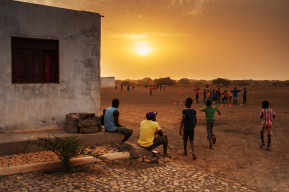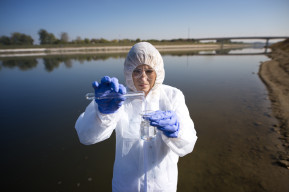News
Droughts: a silent danger in the midst of the pandemic

In the midst of the current global pandemic, droughts become direr due to their impact on two key elements to face infectious diseases: hygiene and food. Therefore, the direct impacts of droughts on people and society must be urgently addressed, to guarantee access to enough and quality water resources, according to the new levels of demand derived from the pandemic.
The region of Latin America and the Caribbean is frequently affected by droughts that have significant impacts on people's quality of life. Between 2000 and 2019, droughts in the region have affected 53 million people (OCHA 2020), as well as between 2005 and 2015 the losses in agriculture and livestock directly attributed to this phenomenon were estimated at 13,000 million dollars, making droughts the most costly disaster for the entire Region in that period (WFP, 2018).
people affected by drought in the region
The dramatic instantaneous impact of other natural hazards, such as earthquakes and hurricanes, draws increased attention to their monitoring, and disaster management plans to these hazards are better designed. In practice, meteorological and hydrological services emit early drought alerts not promptly addressed by governments.
Droughts are usually a silent hazard because they start slowly, within geographical limits that are difficult to determine, and their effects are delayed over time. Their impact on the availability of water for agriculture, biological diversity, society and the economy is gradual, and this feature tends to make the droughts management more complex compared to other natural phenomena. Although the severity of the impacts of this phenomenon is recognized, measures to mitigate its negative effects begin late and in a sectoral manner, without a comprehensive vision of the solutions.
It is recognized that not all the countries of the region have an established policy to deal with this hazard. In this regard, regional cooperation plays a strategic role in improving the capacities of the governments to manage this type of risk adequately.
In accordance with climate variability trends at the regional and global scales, droughts in Latin America and the Caribbean are becoming increasingly frequent, intense and prolonged. Currently, in several countries of this vast territory, droughts that severely affect water resources are being reported.
In the context of COVID-19, droughts increase health, production and social problems that affect the management of the pandemic, and the structural conditions of poverty and famine, in which millions of people live in the region, worsen.
Behaviors that increase health risk, such as the accumulation of water in inappropriate containers, which can involve other serious disease vectors, such as dengue, are exacerbated; mass displacement of people occurs; and, in rural areas and settlements without aqueduct networks, the usual water supplies disappear, taking the sources of water supply away from households and crops.
Within this scenario, in the Latin American and Caribbean social reality, women and girls are the ones who suffer the most, investing time and daily effort to obtain drinking water at greater distances and under conditions that are even more difficult.
In recognition of these issues, there is strong regional scientific consensus on the need for comprehensive approaches to public policies, which allow countries to manage this risk in a more efficient manner. Among the recommended basic pillars, the following can be outlined:
a) Assessment of vulnerabilities and impacts.
b) Monitoring and early warning systems.
c) Intersectoral response and mitigation measures.
d) Droughts prevention that adequately take the social context of implementation into account.
Regarding drought disaster risk management, there are still technical and policy problems to be solved. However, given the serious COVID-19 scenario, there are measures to be taken to alleviate already-known problems and problems that increase with droughts. It is imperative to implement additional specific measures to reduce the risk of the population and guarantee their safe access to drinking water and food, as one of the measures to face the current pandemic.







